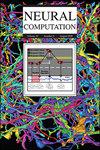Nonlinear Neural Dynamics and Classification Accuracy in Reservoir Computing
IF 2.1
4区 计算机科学
Q3 COMPUTER SCIENCE, ARTIFICIAL INTELLIGENCE
引用次数: 0
Abstract
Reservoir computing information processing based on untrained recurrent neural networks with random connections is expected to depend on the nonlinear properties of the neurons and the resulting oscillatory, chaotic, or fixed-point dynamics of the network. However, the degree of nonlinearity required and the range of suitable dynamical regimes for a given task remain poorly understood. To clarify these issues, we study the classification accuracy of a reservoir computer in artificial tasks of varying complexity while tuning both the neuron’s degree of nonlinearity and the reservoir’s dynamical regime. We find that even with activation functions of extremely reduced nonlinearity, weak recurrent interactions, and small input signals, the reservoir can compute useful representations. These representations, detectable only in higher-order principal components, make complex classification tasks linearly separable for the readout layer. Increasing the recurrent coupling leads to spontaneous dynamical behavior. Nevertheless, some input-related computations can “ride on top” of oscillatory or fixed-point attractors with little loss of accuracy, whereas chaotic dynamics often reduces task performance. By tuning the system through the full range of dynamical phases, we observe in several classification tasks that accuracy peaks at both the oscillatory/chaotic and chaotic/fixed-point phase boundaries, supporting the edge of chaos hypothesis. We also present a regression task with the opposite behavior. Our findings, particularly the robust weakly nonlinear operating regime, may offer new perspectives for both technical and biological neural networks with random connectivity.油藏计算中的非线性神经动力学与分类精度。
基于随机连接的未训练递归神经网络的油藏计算信息处理依赖于神经元的非线性特性以及由此产生的网络的振荡、混沌或不动点动态。然而,对于给定任务所需的非线性程度和合适的动力机制范围仍然知之甚少。为了澄清这些问题,我们在调整神经元的非线性程度和水库的动态状态的同时,研究了水库计算机在不同复杂性的人工任务中的分类精度。我们发现,即使激活函数具有极低的非线性、弱循环相互作用和小输入信号,存储库也可以计算出有用的表示。这些表征只能在高阶主成分中检测到,使得复杂的分类任务在读出层中线性可分。增加循环耦合会导致自发的动力学行为。然而,一些与输入相关的计算可以“骑在”振荡或定点吸引子上,几乎没有精度损失,而混沌动力学通常会降低任务性能。通过在整个动态相位范围内调整系统,我们观察到在几个分类任务中,精度在振荡/混沌和混沌/定点相位边界处都达到峰值,支持混沌边缘假设。我们还提出了一个具有相反行为的回归任务。我们的发现,特别是鲁棒的弱非线性运行机制,可能为具有随机连接的技术和生物神经网络提供新的视角。
本文章由计算机程序翻译,如有差异,请以英文原文为准。
求助全文
约1分钟内获得全文
求助全文
来源期刊

Neural Computation
工程技术-计算机:人工智能
CiteScore
6.30
自引率
3.40%
发文量
83
审稿时长
3.0 months
期刊介绍:
Neural Computation is uniquely positioned at the crossroads between neuroscience and TMCS and welcomes the submission of original papers from all areas of TMCS, including: Advanced experimental design; Analysis of chemical sensor data; Connectomic reconstructions; Analysis of multielectrode and optical recordings; Genetic data for cell identity; Analysis of behavioral data; Multiscale models; Analysis of molecular mechanisms; Neuroinformatics; Analysis of brain imaging data; Neuromorphic engineering; Principles of neural coding, computation, circuit dynamics, and plasticity; Theories of brain function.
 求助内容:
求助内容: 应助结果提醒方式:
应助结果提醒方式:


